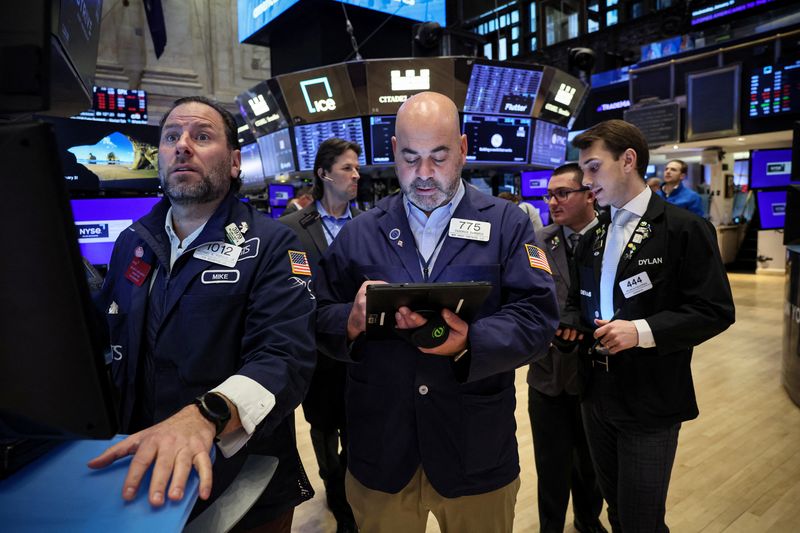By Saqib Iqbal Ahmed and Laura Matthews
NEW YORK (Reuters) - Options volume on SPDR S&P Regional Banking (NYSE:KRE) ETF surged for a second straight session on Thursday, spurred by bearish trading, as a sell-off in shares of U.S. regional banks continued after trouble at New York Community Bancorp (NYSE:NYCB).
KRE shares fell 2% on Thursday while NYCB slipped 8%, extending its losses from Wednesday when the stock experienced a record single-day drop of 37.6% after announcing a surprise loss and a 70% divided cut.
KRE options volume jumped to 490,000 contracts, by 1 p.m. (1800 GMT) with contracts changing hands at seven times the usual pace, according to Trade Alert data. Put options, typically bought to express a bearish or defensive view, outnumbered calls, generally a bullish play, nearly 2-to-1.
With the New York Community Bancorp (NASDAQ:CTBI) (NYCB) shares just below $6, put options that would make money if the stock slipped below $4 by mid March, were one of the busiest contracts with nearly 26,000 traded, signaling worries over further losses.
While many analysts and investors said the problems at NYCB were mostly unique, traders were not taking a chance with the sector as a whole.
"Options traders are defensive," said Matt Amberson, principal at options analytics firm ORATS. "They think this is more systemic."
Options on New York Community Bancorp changed hands at 20 times their usual pace with sentiment leaning towards bearish bets, Trade Alert data showed.
"After the disastrous NYCB move, it is not surprising that the other regional banks are under pressure," said Seth Hickle, derivatives portfolio manager, at Innovative Portfolios.
"Analysts will ... have a deeper dive into books of these regional banks but before the analysis can be done traders have already made up their minds and reduced exposure to this area," he said.
On paper, short sellers were up about $685 million, with $105 million of those gains coming from bearish bets on New York Community Bancorp, according to estimates from data and analytics company Ortex.
Still, bearish investors were taken as much by surprise by the hit to the sector, as the rest of the market. Overall short interest for the sector slipped to $13.70 billion, down about $838 million, over the last 30 days, data from S3 Partners showed.
Meanwhile, KRE 30-day implied volatility - or how much traders expect the KRE shares to swing in the near term - rose to 30.87%, a 3-month high, a sign of increased nervousness about the outlook for the sector. The gauge, however, remains well below the peak of 82%, early last year after the collapse of SVB Financial Group and several regional banks.
"There is some stress being priced in but nowhere near the anxiety from the period around SVB," said Stuart Kaiser, head of equity trading strategy at Citigroup.
Some in the options market also felt the broad sell-off after NYCB's woes were overdone and bought up call options on KRE that would benefit from a share price rebound, said JJ Kinahan, CEO of IG North America and president of Tastytrade.
"I think the question will remain from Wall Street, is this going to be similar to an SVB where it was contained quickly to one to two banks, or is this the first sign where we might see contagion?" he said.
